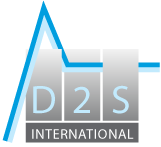SILENCE
Quieter Surface Transport in Urban Areas
SILENCE developed an integrated system of methodologies and technologies for the efficient control of urban traffic noise, taking into account the overall needs of city authorities with respect to noise creation from individual traffic (on road) and mass transport (on rail and road). A holistic treatment was made of all traffic noise facets: urban noise scenarios, individual noise sources, infrastructure, traffic management, noise perception and annoyance.
Contract: TIP4-CT-2005-516288
Website: http://www.silence-ip.org/site/
Acronym: SILENCE
Full title: Quieter Surface Transport in Urban Areas
Project Co-ordinator: AVL List, Graz (AT)
Starting date: February 1, 2005
Duration (in months): 36
Budget: €15,714,025.00
EC contribution: €8,900,000.00
Background
For decades, European policy-makers have concentrated on regulating noise emission from sources such as road and rail vehicles, aeroplanes and other equipment by fixing maximum sound levels, which has resulted in significant noise reduction from individual sources. For example, noise from individual cars has been reduced by 85% since 1970 and noise from trucks by 90%. However, no consideration has been given to reducing noise emission in urban areas. For some sources, such as railways, there was no EU legislation setting noise creation limits.
As a result, and in response to the regulatory gap, the Commission Directive 2002/49/EC, relating to the assessment and management of environmental noise, was adopted. Its main aim is to provide a common methodology to address noise problems across the EU and it is in this context that the activities of SILENCE are to be seen.
Objectives
The main objective of SILENCE was the development of integrated methodologies and technologies to improve control of surface transport noise in urban areas.
The considered aspects were:
-
Control at the source;
-
Noise propagation;
-
Noise creation;
-
Human perception;
-
For road, rail, infrastructure and cities.
SILENCE wanted to provide:
-
Relevant and world-leading technologies to assure efficient control of surface transport noise;
-
Innovative strategies for action plans for urban transport noise abatement and practical tools for their implementation;
-
A significant reduction of people’s exposure to noise, especially under real urban conditions.
The expected outcome of the project was a reduction of noise emission in urban areas of up to 10 dB(A).
Description of work
SILENCE was divided into different subprojects (SP) and work areas, each concentrating on a specific noise-related issue. All the SPs form an integrated system with the participation of the various stakeholders: city authorities; public urban transport operators; national operators of railway traffic and road/rail infrastructure; public research institutes and universities; research and engineering companies; European associations; vehicle manufacturers and integrators; suppliers of equipment, systems and technology for vehicles/infrastructure; specialist SMEs.
The SILENCE subprojects were:
-
Noise perception, annoyance;
-
Global modelling;
-
Vehicle/tyre/road interaction;
-
Road vehicle noise;
-
Rail vehicle noise;
-
Road surface;
-
Railway infrastructure and operation;
-
Road traffic flow;
-
City planning;
-
Dissemination and training;
-
Consortium management.
The SILENCE project worked in close co-operation with other complementary research initiatives and took into account the outcome of previous research projects.
Results
The positive results of SILENCE benefit the overall population of the EU and contribute to an improved quality of life of European citizens.
Advanced noise reduction technologies and methodologies, and the improvement of development processes by decreasing development time and cost, ensure the leadership of European stakeholders and the competitiveness of the industry. The dissemination and training activities aim to stimulate young engineers’ interest in noise research activities.
